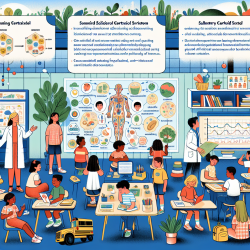Introduction
Childhood bullying is a pervasive issue that can have lasting effects on an individual's psychosocial adjustment into adulthood. Recent research published in the European Journal of Psychotraumatology explores the mediating role of shame in the relationship between childhood bullying victimization and adult psychosocial adjustment. This blog will delve into the findings of this study and discuss how practitioners can leverage these insights to improve outcomes for individuals who have experienced bullying.
Key Findings from the Research
The study conducted by Strøm et al. (2018) involved 681 participants aged 19-37 years and examined the impact of childhood bullying victimization on psychosocial adjustment in young adulthood. The researchers found that both bullying victimization and severe violence were significantly associated with psychological distress, impaired functioning, and increased barriers to social support. Notably, shame was identified as a significant mediator in these relationships, explaining a substantial portion of the association between bullying victimization and psychosocial adjustment outcomes:
- 70% of the association with psychological distress
- 55% of the association with impaired functioning
- 40% of the association with social support barriers
Implications for Practitioners
Understanding the role of shame in the aftermath of bullying is crucial for practitioners working with affected individuals. Here are several ways practitioners can apply these findings:
- Screening for Shame: Practitioners should assess for feelings of shame in individuals who have experienced bullying. Identifying these feelings early can guide therapeutic interventions.
- Addressing Shame in Therapy: Therapeutic strategies should focus on reducing shame and its impact on mental health. Techniques such as cognitive-behavioral therapy (CBT) can be effective in challenging shame-related thoughts and promoting self-compassion.
- Promoting Social Support: Encouraging individuals to seek social support and addressing barriers related to shame can improve psychosocial outcomes. Group therapy or peer support groups may provide a safe space for sharing experiences and reducing feelings of isolation.
Encouraging Further Research
While this study provides valuable insights, further research is needed to explore the complex interactions between bullying, shame, and psychosocial adjustment. Practitioners are encouraged to contribute to this growing body of knowledge by conducting longitudinal studies that examine these relationships over time. Additionally, exploring interventions that specifically target shame in bullying victims can enhance therapeutic outcomes.
Conclusion
The findings from this study underscore the importance of addressing shame in individuals who have experienced childhood bullying. By incorporating these insights into practice, practitioners can better support their clients in overcoming the long-term effects of bullying and improving their psychosocial adjustment. To read the original research paper, please follow this link: The mediating role of shame in the relationship between childhood bullying victimization and adult psychosocial adjustment.










